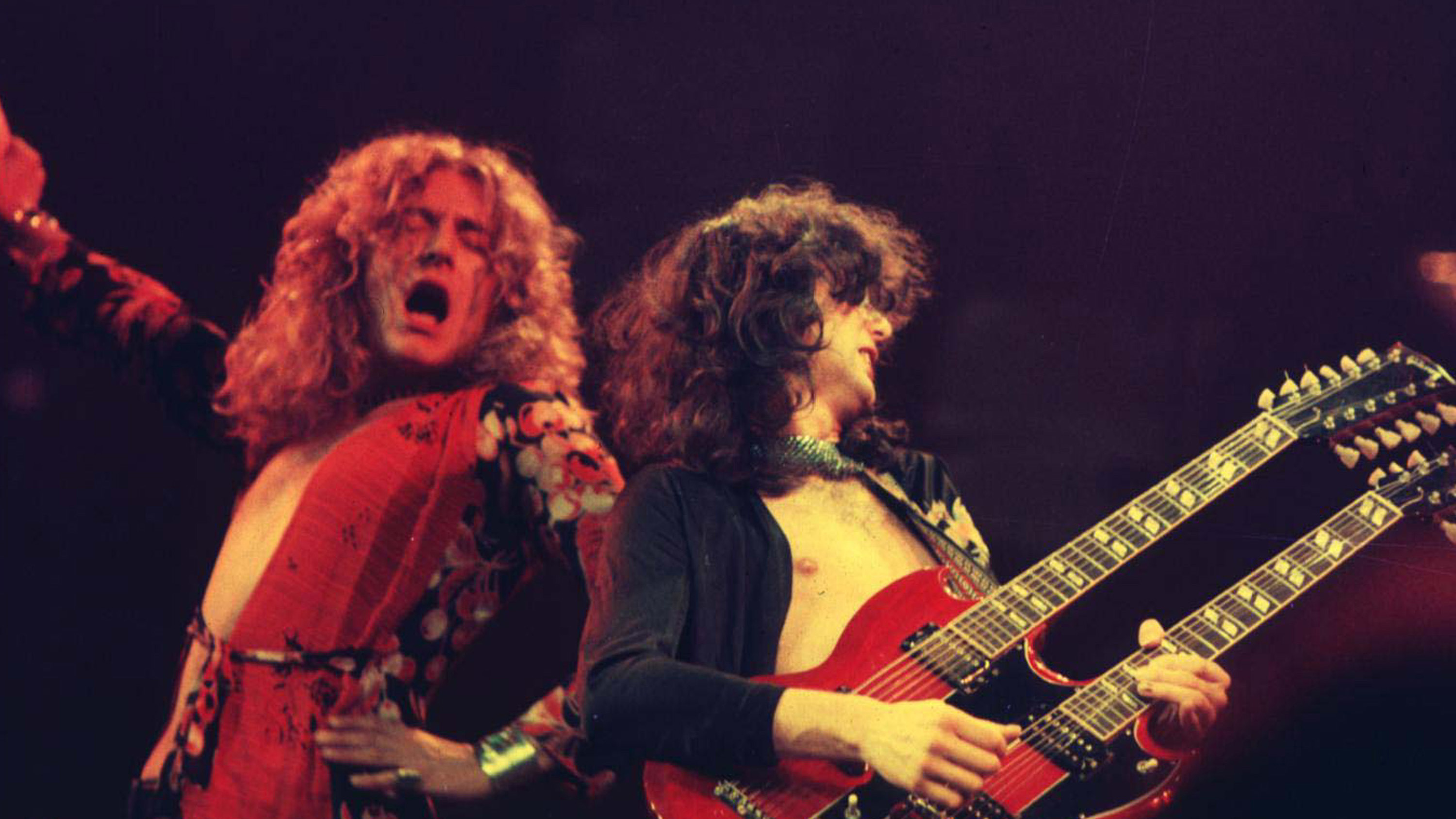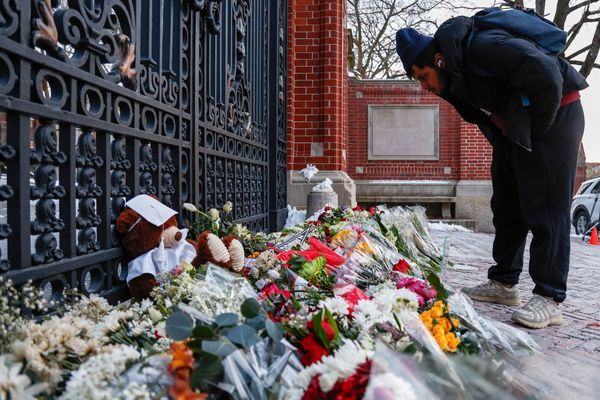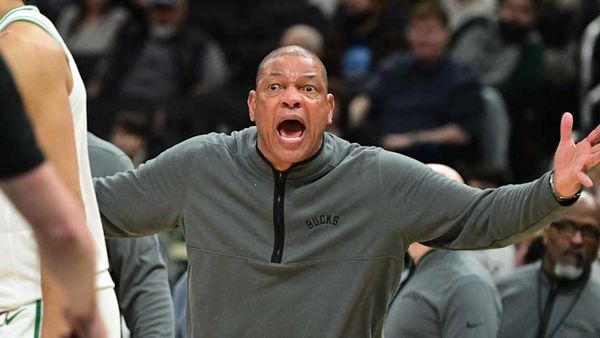
“I’m pleased you’ve enjoyed the book,” Jimmy Page said. “You know, being a guitar nerd like myself.”
It was 2020, and the legendary guitarist was talking about Jimmy Page: The Anthology, a weighty publication which he described as “an autobiography with photographs”.
The ‘guitar nerd’ he was talking to was Chris Bird, editor of Total Guitar magazine.
Five years after their meeting — on 27 May 2025 — Chris Bird died at the age of 48.
His interview with Page was one of the highlights of his career.
This was an epic, 8000-word cover story in which Page discussed every aspect of his life’s work: the groundbreaking music he made, first with The Yardbirds and then with Led Zeppelin; and the tools of his trade, iconic guitars such as the Black Beauty, and the amps and effects with which he explored new sounds.
What follows here is an edited version of the fascinating, in-depth conversation that those two guitar nerds enjoyed together…
Chris Bird: One guitar in particular — your 1960 Gibson Les Paul Black Beauty Custom — has an amazing story.
Jimmy Page: The first time I played it, I had such a connection with it. I thought, ‘This is it. After all this searching and going through guitar shops, this is the one.’ I got it before I went to art college, so when I started doing studio work as a session player, that’s the electric that’s used on pretty much all of that work.
You also played it during Led Zeppelin’s famous concert at London’s Royal Albert Hall in January 1970.
Yes, at the tail end of it when we did some Eddie Cochran stuff. And after the Albert Hall, I thought I’d take it to the States with me on one of the tours and we’d just do all this rock ’n’ roll stuff at the end, the Eddie Cochran stuff with the Bigsby. So the story is that I take it over there, we’re in Minneapolis going to Montreal, and we arrive in Montreal but the guitar doesn’t. It disappears in Minneapolis. I realised it was lost or stolen.
And then?
Gibson, under the circumstances of me having played all the studio work on a Gibson Black Beauty, they made a clone of that, a version of it. That was pretty cool. And I had some extra sort of routing in it, because on the original, where you have the up [position on the selector switch] it is the neck [pickup]. The middle [position] isn’t the neck and the bridge, it’s actually the bridge and the middle pickup. And then the down position is the bridge. So at no point could you get what you’d get on a Standard, which was the neck and bridge pickup together, so I worked out a way of doing that, and I had that built into that particular model, because I thought, well, crikey, you want to do that, you want any combination that you can get. So that was what I had, a Gibson Black Beauty [replica].
And you played the replica during Zeppelin’s 2007 show at the O2.
Yes, that’s the guitar that I played at the O2 when we did For Your Life [from Zeppelin’s 1976 album Presence]. I thought that would be really cool, that thick sound, because it sounded really good. And then after the O2 [in 2015], my guitar that was stolen turns up. It gets found. Isn’t that interesting? And unless you get the story, you just see a Black Beauty and think, oh that’s the same one he had before. But there’s a whole story about how it gets lost and I didn’t expect it ever to be back in my hands ever again. I thought it was gone.
Are you aware of what happened to it in that time?
I think it was stolen from the airport and it was stuck under somebody’s bed, somebody who was in some sort of punk band or something, and nobody wanted to rat on him. I think he died, and once he died things became a bit more apparent as to what had happened, and we got it back.
It’s an incredible story.
Well, these things don’t reappear, do they? It is a great story insofar as I’m still paying tribute to it, if you like, the one that was lost, even though Gibson made an edition of it. And yeah, then the first one turned up afterwards, and it was amazing, fantastic.
Les Paul ‘Number One’ and ‘Number Two' are your famous sunburst Standards. What are the differences between them in terms of setup, and more than anything how they feel to you when you’re playing them?
The first one has got quite a shallow neck, and that’s how it was when I had it. I’ve often wondered if it had been re-finished when I had it, by Joe Walsh, who sold it to me – whether he had re-finished it. He had more than one Les Paul at the time and he’d obviously decided to let this one go. But this was the neck that was on it. On the other one, they all played differently, they weren’t consistent on the ’50s ones. There’s a definite difference in the feel and the tension between the two of them. I’m not so sure whether the neck is quite so shallow on the Number Two, but it’s not one of those big clunky ones. And tonally it’s different as well. However, that’s the one I started to experiment on, so that I could do all various combinations, [coil-tapping] with the push-pull switch.
I gather you used two 12-strings, the Fender Electric XII and the Vox Phantom XII, on Stairway To Heaven...
That’s right. The Vox one, I had that in The Yardbirds, so a lot of the stuff in The Yardbirds – Tinker, Tailor, Soldier, Sailor and all those things – were done on that. And then I got the Fender one a little later. I think I got that when I came back from America the first time I visited. So basically I had two electric 12-strings, and on Stairway... I wanted to use both of them, so I’d have one [panned] left and one right. There is a slight difference obviously in the sound of them, so that bit in the fanfare that leads into the solo with all the 12s, that’s tracking both the Vox and the Fender. There’s a photograph in the book that shows the setup: the two 12-strings and the six-string solo.
And when it came to performing the song live, you turned to the Gibson EDS-1275 doubleneck.
Yes. I thought, what’s the guitar, how to do this on stage? And it was just obvious that the only way to do this, with the sort of fragile guitar of the opening style and the more racy sort of pickups for the solo – the doubleneck is the only way I’m going to do it. When I recorded the song I wasn’t thinking about how I was going to do it live. So in actual fact, the song demanded the guitar. There was no other way to do it. When you think about it, it was the only way to actually replicate that song, apart from jumping from one guitar to another on stage!
Was that approach repeated on later Zeppelin songs?
Well, I certainly didn’t think how I was going to do Achilles Last Stand live! I was just doing it – I was laying on everything that I could think of that would work within the context of whatever the composition was.
Did you miss having the acoustic guitar when performing Stairway To Heaven?
Yeah, sort of, but it was okay doing it with the neck pickup on the six-string neck [of the doubleneck]. That was about as good as it was going to get, really. I didn’t really miss it. I was just able to take it in another direction in a live situation.
In the live performances of that song, it’s not a different arrangement, but a different feel, a different vibe.
Yeah. The textures are going to be different, so the attitude’s going to be different. And another thing about the doubleneck... It’s after the fourth album that that arrives, so when you get to the next album after that, Houses Of The Holy, on that there’s what was originally called the Overture, but it becomes The Song Remains The Same and then The Rain Song, and I did those because I figured I would be able to do those on the doubleneck. So I was actually thinking of the doubleneck and being able to have those two numbers the way they appear on the album. I was thinking about how to really be able to use it, rather than just maybe for one or two songs. So it became an active part of the overall show.
The first Zeppelin album feels less produced, more in the room, so the double-tracking is less obvious. But by the time you get to 1971 and the fourth album, the production is massive. What do you feel was different then in the production sound?
I was acquainted with John Paul Jones’ playing as a session player, but John Bonham, with his approach to the drums and the dazzling technique that he had, the overall sound of his drums was unlike anybody that I’d heard before. It was so musical, because he knew how to tune his drums. So I knew instinctively what I wanted to do with Led Zeppelin that was unlike anybody else. I wanted to have the full stereo picture, the placing of the instruments.
And guitar-wise?
The first album was totally based around the Telecaster. And that’s what it was – just a Supro [Coronado 1690T] amp, [a Sola Sound Tone Bender] overdrive, an Echoplex [EP-3 tape delay] and a Vox wah-wah. So it’s really very minimal and it’s not going through different amps, just this one amplifier. So it really goes to show with all the tones just how much there was that you could get out of one guitar. And that’s basically what it was that I had. I wasn’t using the Black Beauty or anything like that. And as it went on, the second album was clearly going to be all about the Les Paul guitar. But again, it’s a large stereo picture of everything that’s going on, whether it’s panning of things or positioning or whatever, or where things come in or go out, what’s tracked and what isn’t tracked.
Things were moving very fast for you and the band at that time.
The first album was done in a very short time. The second album was done while we were on the road in America, although we were coming backwards and forwards to England, so it’s got all the energy of touring.
That energy was evident in the big rock numbers such as Whole Lotta Love and Heartbreaker, but the second album also had subtler songs such as Thank You and Ramble On…
The first two songs that I had for Led Zeppelin II were Whole Lotta Love and What Is And What Should Never Be... II is almost like turning a coin, isn’t it? One side to the other as far as textures and moods...
Dazed And Confused was just one of many epic tracks in the Zeppelin catalogue – alongside Stairway To Heaven, Kashmir, Achilles Last Stand...
It was part of the overall thing from the first album. Part of it goes back to what I said about singles. With Whole Lotta Love, that was clearly going to be the track that everybody was going to go to, because that riff was so fresh and it still is. If somebody plays that riff it brings a smile to people’s faces. It’s a really positive thing. But I knew with Whole Lotta Love that there weren’t going to be any edits. I insisted that they kept the middle section in it, which of course they didn’t like, but they had to do it. So I thought, well, if you just keep making the numbers longer and longer... [Laughs] They’re not going to make them singles! I did think that in a mischievous way. But there was another reason to make them longer and longer – there was more to say in them. Then again, it could be argued the other way. Good Times Bad Times is really short, as far as minutes and seconds, but there’s just so much that goes on in that. It is what it is. Sometimes you have shorter statements. Sometimes you need longer to get across what you’re doing.
The Danelectro that you used on Kashmir has such an individual sound. When did you first start using that?
Selmers was the big showcase shop, and I don’t know how they got away with it, but they sold every brand of guitar in there, Gibsons, Gretsches, Fenders. I don’t know how they did it, but they did. Suddenly the Danelectro guitar appeared in there, and [John] Entwistle had got the bass with horns on it, and this salesman was saying they had this guitar, it was only £45 or something, and all the other guitars were getting into the hundreds. I said, let’s have a go on it, and it sounded pretty great. Because of course it’s hollow bodied, put together with plywood. It sounded phenomenal, and I could afford it, so I thought, ‘I’ll have this as a sort of second guitar’. I did start to use it a little bit on sessions and there’s a photograph of me in one of these big sessions with loads of guitars and I’ve taken that thing along. I was using it not so much on sessions, because I was using the Les Paul, but yeah, in the Yardbirds I was using it, and putting it into [altered] tunings, and it stayed with me all the way through the Yardbirds straight into Led Zeppelin. It was the backup guitar, because I was only going out there with two guitars really, in ’68, ’69 I just had just the Telecaster and the Danelectro, until I got the Gibson. So if I broke a string, I’d quickly get it into standard tuning from the DADGAD it was in and then go off. On the bootlegs I can’t tell the difference, I can’t tell the swap-over, which is quite interesting really. But it was there, it was a true and trusted friend, it was there all the way through. I started to write things on it like Kashmir because I was used to playing it in the DADGAD tuning, so Kashmir came out on that guitar, and In My Time Of Dying. They’re both on the same album [Physical Graffiti]. So clearly I was using it in [altered] tunings.
Aside from the tunings, do you think it affected the way you played differently to the Les Paul or the Telecaster?
Yeah, the feel of it is different. But I found it a very user-friendly guitar and I thought the Danelectros were quite consistent. We were talking about Les Pauls being very different, certainly in those 50s ones; ’58, ’59, they really are. Of course it’s all in how they’re built, before they became more scientific about it in the approach. I found them to be relatively consistent, the Danelectros, which is always useful.
Before joining The Yardbirds you worked as a producer for other artists. Did you ever consider doing so again?
During the ’70s, I started to get offers coming in, but whatever I had, whether it was the writing or the playing, or the production, I wanted to keep that in Led Zeppelin. The only deviation from that was my playing with Roy Harper on Stormcock [Harper’s classic 1970s album]. He and I were playing the two acoustics, and that was really cool. I really admired Roy’s work and still do. But that was the only area really where I stepped out of Led Zeppelin, because if I wasn’t on the road I was writing for the next album. I was living it and I didn’t want to not live it. I didn’t want to deviate from it or be producing someone else’s album or anything like that. No, any ideas that I had, writing or whatever it was, they would all go to Led Zeppelin.







